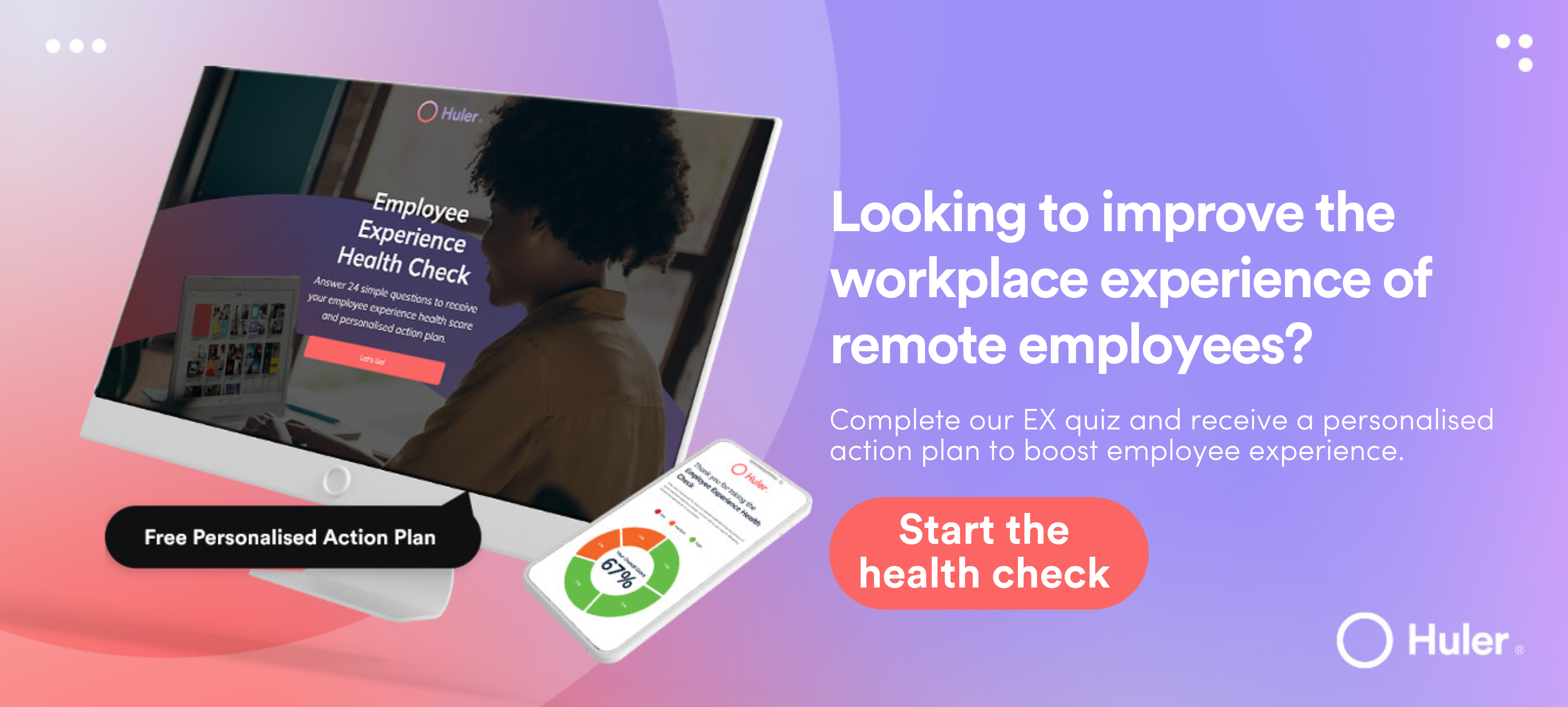Hybrid working is rapidly becoming the norm for many workplaces the world over. This is, in part, due to the pandemic, which opened a lot of people’s eyes as to what the future of work could look like for them. A recent Return To The Workplace Survey found that 47% of employees say they would likely leave their job if their workplace doesn’t offer hybrid working post-Covid. So, it’s safe to say that demand for a hybrid work model is out there. But what about organisations? What are the benefits of hybrid working for both employees and businesses?
In this article, we’ve put together a list of 5 key benefits of hybrid working to help you understand just how beneficial this new way of working can be for your employees, culture and growth. At the end of the article, we also list three common challenges, along with some tips to help your business overcome them when formulating a hybrid working policy.
But before we do that, let’s answer the one key question we’re all thinking…
Why is hybrid working such a big deal all of a sudden?
It wouldn’t be fair to say that remote or hybrid working practices were unheard of pre-2020. They were – but the idea was just beginning to gain traction.
According to statistics from the ONS, in 2019 around 8.7 million people said that they had worked from home at some point prior to the survey. While that number totals less than 30% of the workforce, it does signal that remote working wasn’t totally unheard of prior to the pandemic.
When COVID-19 struck, however, everything changed. What had started as a slow burner turned into a raging inferno and workplaces the world over transitioned to remote work practically overnight.
But, how did we go from a rise in remote working to hybrid working?
Well, it seems while the benefits of remote working (such as a better work-life balance, less distractions, money saved on commuting, etc.) are indisputable, there is still a place in the future of work for the physical workplace for a whole host of reasons. The biggest being that offering hybrid working models gives employees the control to personalise their own employee experience.
The flexibility offered by hybrid working is the #1 reason why it has caught on so fast, and is now favoured by the likes of Google, Facebook, Slack, and Hubspot. It is not an all or nothing model, rather it allows for individuals to make a decision on where they work based on their role, personal preferences, and tasks to be done.
5 Benefits Of Hybrid Working
Empowered Employees
Many businesses hold back from embracing a hybrid work model because they feel it may reduce productivity and stunt growth. But this is not the case.
In a recent study by Deloitte, 55% of workers reported that they believe their colleagues are just as, if not more, productive now than before lockdown. And remember, many were contending with home-schooling, uncertainty and other stressors during that period too!
And there are other factors to take into account too…
As vaccine rollouts progressed and emergency restrictions lifted in 2021, employees had one question on their minds:
Can my employer force me back into the office?
For a multitude of reasons, employees didn’t and don’t want to return to the office. Whether they feel more productive at home or don’t yet feel safe sharing a space with co-workers, clearly many were anxious about what was to come and how happy they would be with the decision when the time came.
Hybrid working models remove that friction. They empower employees with the freedom to choose where and how they work to better suit their needs.
A Wider Talent Pool
When an organization embraces a hybrid work model, their talent pool grows. This is particularly effective for global businesses that service customers across different time zones. Offering the opportunity for remote working undoubtedly opens the door to hiring a more diverse and effective workforce. What’s more, it’s an important tool for engaging talent. In a 2020 survey by recruitment company Hays, two thirds of leaders said that offering remote working improves both talent attraction and retention.
Of course, having a physical office space wherever your business operates is essential, too. It’s important to remember that not every job role can be fully carried out remotely and that there’s still an important place for on-site working. Hybrid working covers all of these bases while still allowing organisations to offer attractive remote working policies that attract, engage and retain the best people in their industry.
We don’t need to tell you just how revolutionary that could be for your business, especially if you need employees with high-level, specialist skills!
An Agile Workforce
The pandemic forced a change in the way almost every business operates. But it was quick, dirty, and (in some cases) imperfect because we needed to act fast in a totally new situation. That being said, according to research by Boston Consulting Group, companies that deployed at least two ‘agile practices’ before the pandemic were 40% more likely than non-agile companies to report their remote teams increased in productivity.
While agile methodologies were once upon a time used mainly by software developers as part of their working process, these techniques are now spreading across a wide range of industries and functions because they are so effective. The agile approach makes it clear that work is an activity, not a place. And, happily, it feeds into hybrid working models because, rather than suggesting doing away with a designated office or workspace, it recommends having a solid supporting and energising base instead.
Agility is key to thriving even in challenging circumstances. If your workforce and the tools they need can handle change with minimal disruption, switching up your operations is much easier further down the line. What’s more, organisations that actively pursue more agility in their operations can benefit from:
- Cost reductions
- More efficient working practices
- Higher employee engagement
- More innovation
- A reduction in carbon footprint
Cost-Savings
In moving to a hybrid working strategy, you can expect to make savings on office space, too.
Having fewer employees on-site at any given time could mean that many organisations can afford to downsize. Doing so could free up much-needed budget to invest in hybrid working tools and technologies, such as digital workplace platforms or learning and development tools to support the continuous professional development of their talent.
According to Global Workplace Analytics, nearly six out of ten employers identify cost savings as a significant benefit of remote work. Global business, IBM, for example cut real estate costs by $50 million by allowing people to work remotely. What’s more, a number of other companies have found that, by moving to hybrid working practices, they have saved money on office furniture, equipment, utilities, security, parking, food and drink.
In seeing work as a thing you do rather than a place you go, many businesses are also reimagining the office as collaborative hubs. In November 2020, Ford Motor Company revealed plans for ‘an inclusive, vibrant and walkable mobility innovation district’ featuring flexible work spaces to facilitate creativity and innovation. According to Lily Diego, design director at Gensler’s Detroit office the interiors of these new spaces ‘will be highly flexible, adaptable and versatile’ with flexible furniture and fixtures that ‘can be flipped, moved or repurposed to support a multiplicity of uses’.
Feed Your Business Goals (While Supporting Employees)
According to recent data from Accenture, hybrid working models (or ‘productivity-anywhere’ workforce models) are linked to growth. The Care To Do Better 2020 report identified six fundamental human needs companies need to meet to unlock the potential of their people. This framework is called “Net Better Off,” and its six dimensions are:
- Emotional and Mental
- Relational
- Physical
- Financial
- Purposeful
- Employable
This framework argues that ‘trust and the care and concern for people is the new currency at work and organisation that leave people Net Better Off will attract and retain the best and brightest talent.’
To do this successfully, organisations should reinvent the way they work by:
- Enabling continuous learning
- Listening to what people need and empowering them with real-time data
- Using technology to enable flexible work arrangements
- Championing workforce wellbeing and equality
- Being transparent and engaging in conversations that matter to your people
Hybrid working is but one part of this new way of meeting the needs of your employees. But it is powerful, as it takes on board the wants and needs of your people and meets them where they are currently. In fact, according to the same Accenture report, 98% of employees are more likely to feel fulfilled in their work when they have the technology they need to work flexibly and creatively within a distributed workforce.
What Are The Challenges Of Hybrid Work?
Like any learning curve, making the transition to a hybrid work model comes with its challenges. Here we will take a look at 3 common challenges of hybrid work and ways in which organisations can overcome them.
Inequality Between Remote Workers and On-Site Employees
Data from the Office for National Statistics (ONS) found that, between 2013 and 2020, employees who mainly worked from home were ‘around 38 percent less likely on average to have received a bonus compared with those who never worked from home’. And employees who worked mainly from home were less than half as likely to be promoted than all other employees.
There is a real danger that, when employees are working remotely, they get forgotten.
For a hybrid work model to go the distance, CEOs, HR teams and managers need to ensure remote employees remain engaged and equal to their in-office counterparts. This can be achieved through:
- Better internal communications
- Utilising a digital workplace, employee intranet, or portal
- Ensuring appraisals are carried out regularly
- Promoting and enabling workplace collaboration
Loss Of Culture
In recent years, organizations have gone to great lengths to build workplace cultures that mostly centre around physical locations and what they believe employees value. Ping pong tables, free lunches, fancy coffee, on-site gyms, after-work socials…the list goes on!
The shift to remote and hybrid working will inevitably change our approach to work culture. But that’s no bad thing! If you think about your company culture pre-pandemic…was it working? Was it reflective of employee values and the goals of the business? If no, there’s an exercise in reinventing your culture from the ground up.
If we look at the huge amount of global organisations that have turned to hybrid working, we can see very clear roadmaps supported by culture, core values and employee needs. Therefore, hybrid working initiatives should be built around your corporate culture to ensure nothing gets lost in translation.
Insufficient Technology (Or Too Much Of It!)
Technology is key to an effective hybrid workforce. Without sufficient access to the right technology, employees will struggle to be productive wherever they are.
It goes without saying now that all physical office spaces should have video conferencing capability to create seamless, inclusive and enjoyable hybrid meetings. But, beyond this, we should also look at the effectiveness of the technology employees are using.
Digital burnout is a real problem for all of us. In a letter published in World Social Psychiatry in May 2020, experts at the National Institute of Mental Health and Neurosciences in Karnataka, India, noted that people are spending more time on digital activities, both for work and in their personal lives, leading to ‘lack of satisfaction, [a] decrease in productivity, exhaustion, and burn out.’
In short, for a hybrid workforce, sometimes the answer isn’t necessarily more technology. Rather, it’s making the most of the technology you have and presenting it in a more intuitive, user-friendly way while upholding the right to disconnect and create solid work-life boundaries.
Planning For Hybrid Working
Introducing hybrid work and harnessing its benefits requires a significant culture shift, along with robust policies to back it up. As the demand for flexible working arrangements grow, many organisations will have to give careful consideration to the kind of infrastructure and processes they will need to make hybrid working productive and workable for everyone beyond the events of 2020.
Long Term Hybrid Working Planning
Many hybrid working policies have been drawn up in response to stay at home instructions and social distancing guidelines. In the short term, it will still be necessary to make decisions based around these things to ensure health and safety in the workplace and to stop the spread of the virus. For organisations that haven’t completely ‘bought into’ the hybrid working concept, it will likely still be a necessity to keep employees able to work as we navigate vaccines, flu season, new variants and more.
While this short term planning is important, as it will answer the immediate questions and concerns of employees, now is also the time for employers to flesh out flexible working policies for the new normal that lies before us.
Get On The Same Page
First of all, to make flexible and hybrid working truly work everyone has to be on the same page. Starting with the C-suite and trickling down to every corner of your organisation.
If there is the smallest hint of doubt it won’t work because unconscious bias will creep in and the system will fail from the inside out.
Your hybrid working arrangements will only work and be beneficial when everyone lives and breathes them.
Be Crystal Clear
Working remotely during a global pandemic is not the same thing as hybrid working long term. As life returns back to some kind of normal, you’ll need to take steps to ensure your hybrid working policy is spelled out as clearly as possible.
For example, Hubspot presented their employees with three options to choose from in their hybrid work policy: @office, @flex and @home. Similarly, Google set out a hybrid work week where most employees spend around three days in the office and two working from anywhere.
When planning hybrid working for your organisation, there is no room for ambiguity. Be clear on expectations, what is allowed, what isn’t and how you plan to implement the strategy moving forward.
Be Prepared
There are a whole world of factors to consider when it comes to hybrid work such as:
- Who is eligible for hybrid working
- How employees go about requesting hybrid working arrangements
- How to enable hybrid working (i.e. technology, communication, equipment etc)
- How to make it fair, equal and inclusive
- Security concerns
- Training for managers and leaders
- Amending current policies that relate to hybrid working
- Legal implications
- Employee wellbeing
- Performance management
- Employee experience
While the shift to remote working in 2020 was quick and dirty, moving to a hybrid work model should be anything but. There are a lots of nuances to take into account, as well as a plethora of misconceptions and reservations lurking in the minds of your workforce.
As we’ve mentioned above, there are many benefits to hybrid working. And all of them can be enjoyed with the right level of planning, controls, and organisational culture.
Enabling Hybrid Working with Huler
Here at Huler, we are passionate about helping businesses to create people-first digital workplace solutions that are built with better employee experiences in mind. For more information, take a look at our HulerHub employee experience platform and book your free personalised demo to see what we’re all about.







